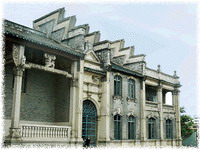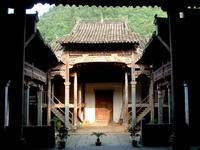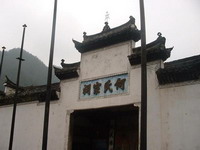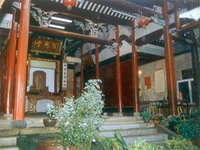About the Ranking
As we all known, there are a lot of ancestral temples in China. As an important form of construction to record ancient Chinese life, it has important historical significance. With the passage of history, many of them have become no longer complete, but several of the ancestral temples are lucky escapes, still reproduce the history of that old time for visitors.
-

When approaching the ancestral temple, you will be intoxicated by its exquisite carvings. The ancestral temple is found as an outstanding representative which is the most-preserved, best reflection of the local architectural style in the Yellowstone area so far, and its cultural value is very precious. Yu's ancestral temple is behind mountain, covers an area of about more than 2000 square meters, preserve the architectural integrity of the wood and stone groups. Entering the temple, as if into an ancient folk art palaces, the whole building had been carved Dragon, Phoenix, animals, flowers and birds, humans and so on, people used the piercing and relief technical skills, with delicate carving, created vivid figures and unique style. Moreover, such a grand old buildings, use tenon structure, even has no a nail, amazing people.
-

The most famous ancient ancestral temple in Kaiping, it’s the China's construction craftsmen in the light of Western style buildings designed by the Chinese architects. It also known as Yuzhongxiang Temple, built in Qing Dynasty (1906), consisted of the two main buildings: Fengcai Temple and Fengcai Tower. The Temple has 6 courtyards and 15 halls, with a total area of 5364 square meters. Its structure is inherited in the form of ancient Chinese architectural style of ethnic and the Western architectural characteristics of the art, well-structured, elegant and grand, boasted the unique building in emigration constructions. Since then, both at home and abroad, the later generation of Yu all use “Fengcai” and “Wuxi” to name the building or organization, to commemorate their ancestors.
-

Located in the well-known place Yaoli, the Cheng’s Temple is the most eye-catching architecture in the whole village, still maintain the ancient style, as if in the stubbornly guarding something. There are many wood carvings about Cheng Yaojin in the beam of the temple, it is also the General assembly site of the New Fourth Army which hold by Cheng Yi to mobilize anti-Japanese. Today the temple’s arrangement is still like 70 years ago, in the 100 square meters of hall, only a few benches, it goes a bit too far for the magnificent, overwhelming the General Assembly scene.
-

Getting a lot of plaques are the major feature of this ancestral temple, in the temple, there are many couplets, antique bamboo slips and hanging panels, displaying the rich culture, ancient celebrities and stories of Guodong. In the back hall displayed some coffins, which is the performance of the local burial customs; the shrines and partition boards date back to the Ming Dynasty. There is a podocarpus in the back yard which is the same age as the temple, and some ancient Buddhist pines with nice shape and lush foliage. The experts believe that they are old treasures in similar trees in this province. The exhibition of Guodong folk art displays a large number of rare antiques. Some agricultural products are very strange that allows visitors spoiled for choice.
-

It is now the most complete preservation of the family ancestral temple in Putuo district. Because of their different options, different style, they got different forms of visual effects. The temple with Ming and Qing’s style, regardless of its shape, size, history and the exquisite sculpture, has long been beyond the scope of the clan, it has become an island of ancient temples on behalf of the family. Place yourself, as if they are telling about the distant past to you.